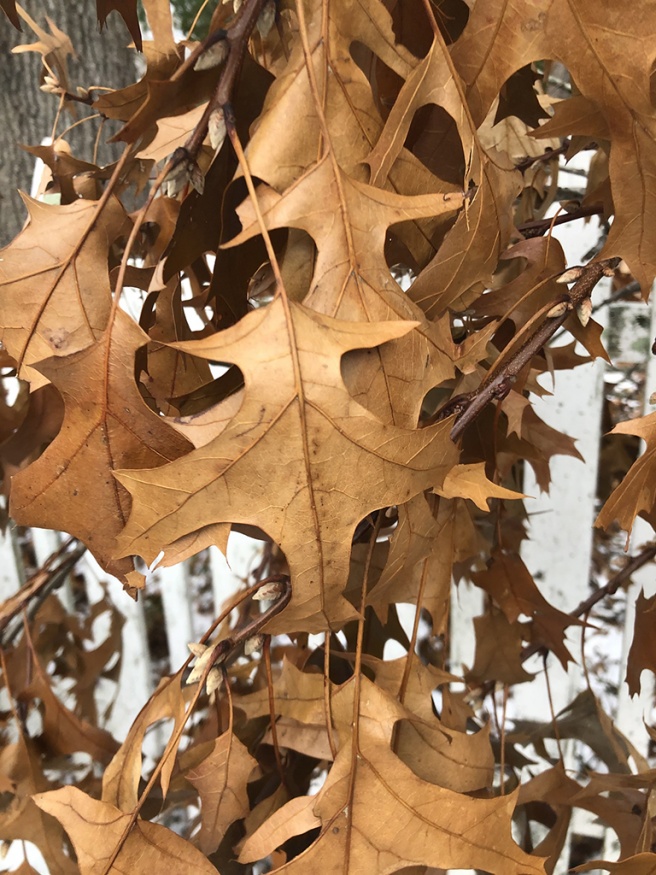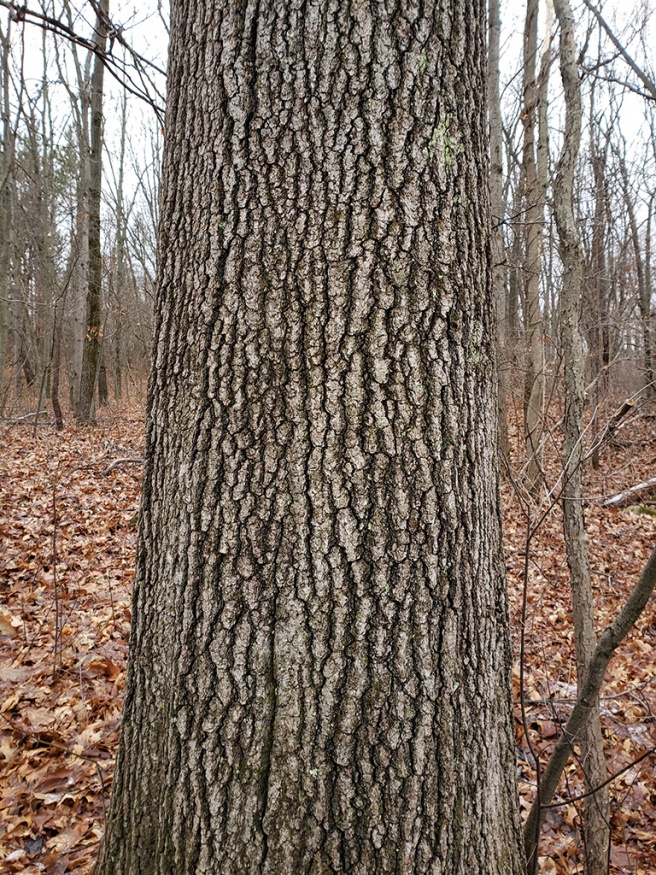Black Oak
-347.jpg)
Other Names: eastern black oak
Family: Fagaceae Native to: Eastern North America
Eco benefits: medicinal
Natural habitat: hillsides & uplands
Shapes: round, irregular
Growth rate: medium
Light: full sun
Transplanting: difficult
Soil: well drained, dry, sandy
Reproduction type: monoacious
-348.jpg)
Black oak is native to Eastern North America; abundant in patches around the Great Lakes, otherwise not common in Ontario. Usually it is found in tall grass prairies but can grow in heavier soils. The overall shape is irregular to round, Reaching up to 65ft in height with a 3ft trunk diameter. Black oak is similar to red oak (Quercus rubra) with a few differences in the leaves, bark and cambium.

Leaves are shinny dark green on the upper surface and yellow-brown on the lower surface. The texture is rough; hairy early in the season and with bristle tips. Clusters of end buds are gray, pointed, and covered in wooly hairs. Black oak usually has fewer, Deeper lobes than that of red oak.

The tree's dark gray bark becomes near black with age. Mature bark produces blocky squares whereas red oak has long vertical furrows. Orange Inner bark of the black oak contains quercitron which can be used as a yellow dye. This also differentiates it from red oak. Acorns are 1 - 2cm equally long as wide. A slightly hairy bowl-shaped cup covers half the nut. They are dispersed as food by birds, white tailed deer and other wildlife.
Black oak is intolerant of shade and competition with other tree species. It also has a long taproot which prevents it from what is considered easy to transplant in the landscaping world. Proper growing techniques can, however, alleviate this issue.
References
Jill and Olivia's guide to deciduous trees of the Northeast. (n.d.). Eastern Black Oak. Retrieved from http://www.bio.brandeis.edu/fieldbio/Clapp_Hansen_Siegel/Pages/Black_Oak.htmlq
Natural Resources Canada. (2015). Black oak. Retrieved from https://tidcf.nrcan.gc.ca/en/trees/factsheet/455
Tree Atlas - Ontario. (2020). Black oak. Retrieved from https://www.ontario.ca/page/black-oak
University of Guelph Arboretum. (n.d.). Black Oak - Quercus velutina. Retrieved from https://www.uoguelph.ca/arboretum/thingstosee/trees/blackoak